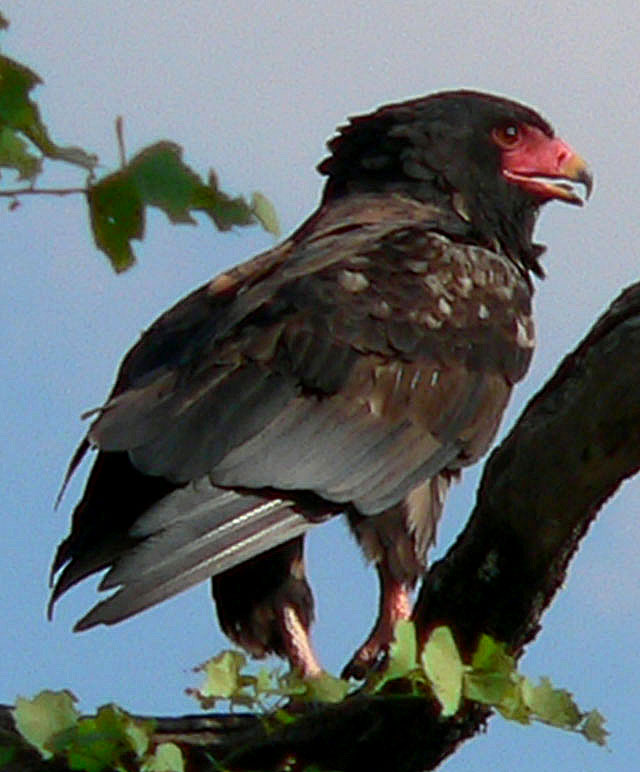Sub-Zambezi Birds
Subtropical birds of the Bushveld
On our trip, we were very blessed to get these and other bird images to bring you. Some are quite rare, while others slightly more common in certain areas. I’m sure they’ll go down a treat, because of their general scarcity on the web.
The whole story started with an ostrich, early one morning. I was going to write about game capture until I heard this loud knocking at the window where I was sitting. Quite insistent, it was! I opened the curtain to find a fully-grown male ostrich. Well, that made up my mind to write about birds after taking his picture. Obviously the birds from our recent trip, that is.
At least he had the manners not to roar outside the window. You say they roar? Yes like a lion. If you check it out, it’s three images down.
The little bee-eater is an abundant and tame bird; a resident to much of sub-Saharan Africa and is insect eating, especially bees, wasps and hornets. This richly-colored, slender bird is the smallest of the African bee-eaters.
The black sparrow hawk is the largest African member of the genus Accipiter, occurring south of the Sahara mostly in forests and non-desert regions where there are large tall trees suitable for nesting.
The spotted eagle-owl is a medium-sized species of owl and is one of the smallest of the eagle owls. With its pale face – off white to pale ocher – and the yellow eyes and prominent ear tufts, it looks pretty intimidating. Certain of the eagle-owl species have been recorded attacking people for varying reasons not fully understood.
Lilac-breasted-Rollers are insectivores and here this one is cleverly posting itself where fruit flies hang out.
Can’t see the back but that’s what he/she looks like from the danger end.
All African vultures are Old World vultures. These are the birds that are seen scavenging on the remains of dead animals on the African plains or circling around in the sky in search of one. A group of vultures resting in trees are referred to as a wake, a committee or a venue. When they take to the sky, the collective noun is a kettle of vultures.
The saddle-billed stork is a large wading bird; a widespread species which is a resident breeder in sub-Saharan Africa from Sudan, Ethiopia and Kenya south to South Africa, and in The Gambia, Senegal, Côte d’Ivoire and Chad in west Africa. Its closest relative is the Asian black-necked stork, the only other member of the genus Ephippiorhynchus.
The vulture’s characteristic bald head, bereft of normal feathers, was once believed to help keep the head clean when feeding but this bare skin may play an important role in thermo-regulation. Vultures will hunch their bodies and tuck in their heads when cold, but on hot days, they open their wings and stretch out their necks.
The tree it’s eating was an Acacia tortilis until the Australians got hold of things! Now it’s eating a Vachellia tortilis and I’m sure it can’t even taste the difference. These indigenous birds are not common in the wild, although when they get to like your domain they become very sociable and friendly. A warm weather species.
The Meyer’s parrot enjoys a diet that includes fruit, seeds, nuts, berries and cultivated crops and nests in tree hollows where it lays three or four white eggs. The chicks usually leave the nest about 60 days after hatching.
The western migratory Wood-Sandpiper is quite a rare bird to find in the Southern African region. Although when they like an area they will come back every year. In their non-breeding season, these birds migrate to many parts of Africa back and forth from Sweden, Scotland and Northern Europe every year.
They give the impression of ‘I’m watching you’. These birds have been known to attack people if they get too close to their nests and with those feet you need to take care. These birds kill their prey by stomping on it repeatedly until dead or immobilized, then tearing at it with their beak.
The secretary bird has traditionally been venerated in Africa for its striking appearance and for for its ability to deal with venomous pests and snakes.
Cape Vulture, because that’s where they saw them first – in the Cape. This vulture gets around many parts of Africa. Photographers will tell you, good clean images of vultures are hard to get.
The whistling sound these ducks make is perfectly in rhythm with their wing flats in flight, so that it sounds like their wings need oiling. Sweet-sweet-sweet-sweet-sweet… and so on. Call it a sweet sound if you like.
As you can see, the youngster is starting to sport its parent’s colors.
* One interpretation is, this eagle gets its name “Bateleur” from the French word for “street performer.” The bird’s typical motion of rocking its wings from side-to-side when gliding, mimics the action of a tight-rope walker catching his balance on the high wire, which was a common form of entertainment in the streets of France between buildings. The other interpretation for their name, is from the amazing areal performances these eagles are capable of producing and the gliding motion is only one of these actions. I prefer the first interpretation, being that of the “street performer.”















